Using Rule 0 to Determine a Deck's Power Level
For the last few days I've seen a couple of different Commander personalities discuss how to accurately quantify a deck's power level, and thought I'd open it up to see what method people here use.
In essence, how would you use Rule 0 before a game to easily portray the power level of your deck, and what kind of question(s) would you ask opponents in order to accurately determine their power level?
In essence, how would you use Rule 0 before a game to easily portray the power level of your deck, and what kind of question(s) would you ask opponents in order to accurately determine their power level?
Sheldon wrote:You're the reason we can't have nice things.
Current Decks: Brago | Breya | Edgar | Jalira | Karador | Mathas | Marisi | Meren | Mizzex | Muldrotha | Rubinia | Wanderer | Commander Cube | Zombie Horde
Forum Resources: Commander FAQ | MTGNexus Commander Deckbuilding Guide | MTGNexus Twitch Channel | TCGPlayer Affiliate Link
Follow me on: Twitter: @cryogen_mtg
Forum Resources: Commander FAQ | MTGNexus Commander Deckbuilding Guide | MTGNexus Twitch Channel | TCGPlayer Affiliate Link
Follow me on: Twitter: @cryogen_mtg
I always ask people
1) is this CEDH
2) if not, what power level out of 10 would you say you're at, where 10 is CEDH
However, my experience is that people are very bad at rating decks and often I will see decks people rate as 7s or 8s and in my opinion they're closer to 4s or 5s. This is the biggest gray area in my experience. Everyone thinks their decks are 7/10.
I saw an attempt on reddit not too long ago to use a "+1 if you have xyz" ranking scale to get an "out of 10" score and it was really surprisingly accurate; it was within 1 point of all of my decks. Things like "how many busted rocks" "how many tutors" "do you have an infinite combo" etc.
I do not think it would be that difficult to come up with a scale that would be accurate to about +/- 1 to the point you could write an app that would rank someone's decklist.
1) is this CEDH
2) if not, what power level out of 10 would you say you're at, where 10 is CEDH
However, my experience is that people are very bad at rating decks and often I will see decks people rate as 7s or 8s and in my opinion they're closer to 4s or 5s. This is the biggest gray area in my experience. Everyone thinks their decks are 7/10.
I saw an attempt on reddit not too long ago to use a "+1 if you have xyz" ranking scale to get an "out of 10" score and it was really surprisingly accurate; it was within 1 point of all of my decks. Things like "how many busted rocks" "how many tutors" "do you have an infinite combo" etc.
I do not think it would be that difficult to come up with a scale that would be accurate to about +/- 1 to the point you could write an app that would rank someone's decklist.
The most relevant questions for me are: Combo? MLD?
Unless people are being disingenuous or simply don't understand the why behind those two points being so contentious, the above points serve as a pretty good barometer for deck building philosophy.
Unless people are being disingenuous or simply don't understand the why behind those two points being so contentious, the above points serve as a pretty good barometer for deck building philosophy.
As a short answer, I'd look at rough estimations of average CMC (if available), interaction density, tutor density and the main avenues the deck leverages to win (e.g. tokens, voltron, combo, stax, MLD, haymakers, etc.).
SPOILER
Show
Hide
Ding ding ding! We have a winner! I think there's a widespread mindset outside cEDH where "7/10" has become a general term used to represent decks that are well-constructed, but also have sufficient restraint to be appropriate for the playgroup; the idea being that these 'ideal' decks lead to games that are varied, interactive and finish in a decent time frame.
In this mindset, a higher rating indicates that you may have committed a bit of a faux pas by exceeding your group's typical power level by a not-insignificant amount, whereas a lower rating indicates either significant budget constraints or that the deck is poorly constructed.
Obviously, this works fine within a playgroup but falls apart very quickly outside it. Like Gilrad said, the presence or omission of infinite combos and/or MLD speaks a lot to a group's typical power level. (Of course, assuming the decks in groups with these aspects included are built to successfully leverage them).
Put these together and you have people with differing experiences of the various power levels of EDH, which will affect their perceptions massively. From my own experience, I've never played a cEDH deck, so I don't have any experience of how a 10/10 deck plays out; while I do watch channels like the Spike Feeders, lacking the actual experience leads to a lack of understanding the nuances of how decks of those power levels play out. From that, it's kind of difficult to peg what a 7/10 is when I don't fully appreciate what a 10/10 deck is.
Before I ramble on too much further, a quick rating I'd give my own decks, based on the C19 pre-cons being a 2-3, is as follows. From these, you can probably see the influence of me playing in a non-combo, non-MLD, battlecruiser meta. (Even as I write them, I'm wanting to bump up my ratings by 0.5 - 1 for each deck, even though I think the ratings below are more honest).
4 = Ayli
5 = Marisi and Roon
6 = Kefnet and Patron
7 = Derevi
In this mindset, a higher rating indicates that you may have committed a bit of a faux pas by exceeding your group's typical power level by a not-insignificant amount, whereas a lower rating indicates either significant budget constraints or that the deck is poorly constructed.
Obviously, this works fine within a playgroup but falls apart very quickly outside it. Like Gilrad said, the presence or omission of infinite combos and/or MLD speaks a lot to a group's typical power level. (Of course, assuming the decks in groups with these aspects included are built to successfully leverage them).
Put these together and you have people with differing experiences of the various power levels of EDH, which will affect their perceptions massively. From my own experience, I've never played a cEDH deck, so I don't have any experience of how a 10/10 deck plays out; while I do watch channels like the Spike Feeders, lacking the actual experience leads to a lack of understanding the nuances of how decks of those power levels play out. From that, it's kind of difficult to peg what a 7/10 is when I don't fully appreciate what a 10/10 deck is.
Before I ramble on too much further, a quick rating I'd give my own decks, based on the C19 pre-cons being a 2-3, is as follows. From these, you can probably see the influence of me playing in a non-combo, non-MLD, battlecruiser meta. (Even as I write them, I'm wanting to bump up my ratings by 0.5 - 1 for each deck, even though I think the ratings below are more honest).
4 = Ayli
5 = Marisi and Roon
6 = Kefnet and Patron
7 = Derevi
-
schweinefett
- Posts: 114
- Joined: 5 years ago
- Pronoun: Unlisted
I think approximate winning turn is a good measuring stick. So is average cmc, but that can be tough for some people to be able to tell.
I generally just tell them to be as honest as possible and just start from there. It's not a great measure, since people I've met playing legacy have a different idea of what kinda decks I play compared to in edh.
I generally just tell them to be as honest as possible and just start from there. It's not a great measure, since people I've met playing legacy have a different idea of what kinda decks I play compared to in edh.
-
ilovesaprolings
- Posts: 1063
- Joined: 5 years ago
- Pronoun: he / him
1)What is the turn your deck eliminates a player usually?
2)How do your deck fare against a precon?
To me, te ideal answer are 1) turn 8 and 2) it usually wins but the precon has a chance with good hand and plays
2)How do your deck fare against a precon?
To me, te ideal answer are 1) turn 8 and 2) it usually wins but the precon has a chance with good hand and plays
Two things that stand out to me.
1. Decks don't pilot themselves. Knowing something about the player is as (if not more important) than knowing something about the deck.
2. An undefined scale (like 1 to 10) is not helpful, and may be more misleading than not. A more simple scale would be.
Level 0 - The deck would need to be improved to be on the level of the Commander Precons
Level 1 - Commander Precons
Level 2 - There's a fair amount of jank/What the deck seeks to accomplish is not necessarily winning.
Level 3 - I think it's good, but it's not "cutthroat" and can't combo kill a table
Level 4 - Not cEDH, but a lot of "Spikey" elements and can either quickly win and create prison situations
Level 5 - cEDH
Something like that. You would still have people mislabeling their deck, but probably not as much and have a better idea.
1. Decks don't pilot themselves. Knowing something about the player is as (if not more important) than knowing something about the deck.
2. An undefined scale (like 1 to 10) is not helpful, and may be more misleading than not. A more simple scale would be.
Level 0 - The deck would need to be improved to be on the level of the Commander Precons
Level 1 - Commander Precons
Level 2 - There's a fair amount of jank/What the deck seeks to accomplish is not necessarily winning.
Level 3 - I think it's good, but it's not "cutthroat" and can't combo kill a table
Level 4 - Not cEDH, but a lot of "Spikey" elements and can either quickly win and create prison situations
Level 5 - cEDH
Something like that. You would still have people mislabeling their deck, but probably not as much and have a better idea.
Heh, this thread reminds me of an old XKCD:

The best way forward is to pick some scale already in use and roll with it. The Command Zone one may be a bit distorted, with a lot of useable space crammed into the 7-8 range, but it is also the most popular one. Although that may just be our perception - we're a special breed, committed enough to this format and bettering ourselves as builders to hit up an internet forum about it. It's entirely possible that their remarks about most EDH decks actually falling within 5-6 territory are true.
A good measure of EDH power is the deck's level of interaction and ability to win out of nowhere. If you take a look at a cEDH shell, you'll find it stuffed to the gills with permission, ramp and draw/tutoring, with a few slots dedicated to a quick combo kill. The quicker you can assemble a game-winning board state (not in terms of game turn count, but how long ago you started working on it), and the better you can protect it and interact with others, the stronger the deck is.

The best way forward is to pick some scale already in use and roll with it. The Command Zone one may be a bit distorted, with a lot of useable space crammed into the 7-8 range, but it is also the most popular one. Although that may just be our perception - we're a special breed, committed enough to this format and bettering ourselves as builders to hit up an internet forum about it. It's entirely possible that their remarks about most EDH decks actually falling within 5-6 territory are true.
A good measure of EDH power is the deck's level of interaction and ability to win out of nowhere. If you take a look at a cEDH shell, you'll find it stuffed to the gills with permission, ramp and draw/tutoring, with a few slots dedicated to a quick combo kill. The quicker you can assemble a game-winning board state (not in terms of game turn count, but how long ago you started working on it), and the better you can protect it and interact with others, the stronger the deck is.
It is tough. I have jank decks that have MLD. I have decks that have 6 card infinite combos. I would call some of them 5/10 decks.
It is very tough. I think the best way to ask is:
- What turn does your deck usually win?
- Is your main strategy to win with a combo?
- What do you rate your deck out of 10, and what would you need to make it better?
I think that last question is the most relevant. Is it the budget? Is the deck optimized but 5/10 because you want to build around self-imposed constraints?
I can run through a few of my decks.
Karador:
1. Turn 4 or later
2. Yes, but not necessary
3. 9.5/10. To make it better I would have to get some expensive tutors that I do not feel are worth the trouble
Maelstrom Wanderer
1. Turn 6 or later
2. No, not at all
3. 9/10, would be better if it had some combos, which have been consciously left out.
Rakdos, Lord of Riots
1. Turn 7+ usually, but can be earlier
2. No, but it can combo
3. 7/10, limited by budget choices and deckbuilding philosophy for the power level I wanted from the deck.
Marchesa, the Black Rose
1. Turn 10+
2. No, but it can combo
3. 8.5/10, limited by only playing tutors that fit the deck's theme and other thematic building decisions
Mogis, God of Slaughter
1. Turn 14+
2. No combos
3. 5/10, limited by severe deckbuilding restrictions (i.e., no creatures)
Reyhan and Ishtai
1. Turn 7+
2. Maybe 40% of my wins. There are many combos but they require 5+ pieces. I usually win before the combos are fully assembled.
3. 8/10 - no tutors in the deck, built to go big non-infinitely rather than combo off, but with so many synergies infinite combos happen, which makes this deck a bit better than originally intended.
Karador Spirit Tribal
1. It has never won
2. No infinite combos, they were specifically taken out
3. 3/10 - Stax/grave pact effects removed, combo cards removed, playing a bunch of kamigawa spirits, low power level.
The Ur-Dragon
1. Turn 8+
2. No infinite combos
3. 6/10 - very few tutors and a high curve hold the deck back.
It is very tough. I think the best way to ask is:
- What turn does your deck usually win?
- Is your main strategy to win with a combo?
- What do you rate your deck out of 10, and what would you need to make it better?
I think that last question is the most relevant. Is it the budget? Is the deck optimized but 5/10 because you want to build around self-imposed constraints?
I can run through a few of my decks.
Karador:
1. Turn 4 or later
2. Yes, but not necessary
3. 9.5/10. To make it better I would have to get some expensive tutors that I do not feel are worth the trouble
Maelstrom Wanderer
1. Turn 6 or later
2. No, not at all
3. 9/10, would be better if it had some combos, which have been consciously left out.
Rakdos, Lord of Riots
1. Turn 7+ usually, but can be earlier
2. No, but it can combo
3. 7/10, limited by budget choices and deckbuilding philosophy for the power level I wanted from the deck.
Marchesa, the Black Rose
1. Turn 10+
2. No, but it can combo
3. 8.5/10, limited by only playing tutors that fit the deck's theme and other thematic building decisions
Mogis, God of Slaughter
1. Turn 14+
2. No combos
3. 5/10, limited by severe deckbuilding restrictions (i.e., no creatures)
Reyhan and Ishtai
1. Turn 7+
2. Maybe 40% of my wins. There are many combos but they require 5+ pieces. I usually win before the combos are fully assembled.
3. 8/10 - no tutors in the deck, built to go big non-infinitely rather than combo off, but with so many synergies infinite combos happen, which makes this deck a bit better than originally intended.
Karador Spirit Tribal
1. It has never won
2. No infinite combos, they were specifically taken out
3. 3/10 - Stax/grave pact effects removed, combo cards removed, playing a bunch of kamigawa spirits, low power level.
The Ur-Dragon
1. Turn 8+
2. No infinite combos
3. 6/10 - very few tutors and a high curve hold the deck back.
The New World fell not to a sword but to a meme
Show my commander to my opponents. Tell them basically what the deck does - infect, control, mill, etc. Answer questions they ask about it without giving specific "secrets" away.
How long have you been playing Magic/Commander?
Is that a netdeck or your own brew?
What's the commander?
How long have you had that deck?
“Comboing in Commander is like dunking on a seven foot hoop.” – Dana Roach
“Making a deck that other people want to play against – that’s Commander.” – Gavin Duggan
"I want my brain to win games, not my cards." – Sheldon Menery
“Making a deck that other people want to play against – that’s Commander.” – Gavin Duggan
"I want my brain to win games, not my cards." – Sheldon Menery
- toctheyounger
- Posts: 4011
- Joined: 5 years ago
- Pronoun: he / him
- Location: Auckland, New Zealand
This.
What makes a game of commander fun for you?
How many turns is too many turns?
Do you run combo?
If so, how many turns on average before you look to assemble said combo?
- Candlemane
- Posts: 123
- Joined: 5 years ago
- Pronoun: he / him
I'm going to start by saying I use a scale of 1-5. Too much wiggle room otherwise to durdle in. I also call it the "meanness scale", not power level. Since I play more for the game of it rather than straight winning, this helps immensely.
So, 1 is about no interaction, can't win early, and doesn't focus someone down. 5 is more like stax or MLD, where there no interaction the other way (against me) while I combo or grind you down.
Back in the day, my old Tariel deck was a close 5. Board wipe tribal, grave hate, ramp, and creature recursion to grin your down. Today it's more a 3-1/2 (many better cards have be printed to deal with it).
I try to build all my decks to be 3-4 on my scale. Interaction with a game plan to win, with lite stax effects or counter/"no" cards, if then. I want to play a game with people, not make them regret the decision to sit down with me.
So, 1 is about no interaction, can't win early, and doesn't focus someone down. 5 is more like stax or MLD, where there no interaction the other way (against me) while I combo or grind you down.
Back in the day, my old Tariel deck was a close 5. Board wipe tribal, grave hate, ramp, and creature recursion to grin your down. Today it's more a 3-1/2 (many better cards have be printed to deal with it).
I try to build all my decks to be 3-4 on my scale. Interaction with a game plan to win, with lite stax effects or counter/"no" cards, if then. I want to play a game with people, not make them regret the decision to sit down with me.
Paper EDH
Tameshi, Reality Architect
Sapling of Colfenor
Feather the Redeemed
Lynde, Cheerful Tormentor
Thalia and Gitrog
Xryis, the Writhing Storm
Tameshi, Reality Architect
Sapling of Colfenor
Feather the Redeemed
Lynde, Cheerful Tormentor
Thalia and Gitrog
Xryis, the Writhing Storm
My problem isn't so much that people misrate their decks, but it's that their frame of reference does not line up well with others.
IMO, the best answers in this thread are ones that try to establish a frame of reference first with objective criteria (i.e. what turn do you win on?, do you win with combo or do you have to attack with creatures?).
I would say, that it's more important to ask "how do you envision games ending?". One of my friend's has a Mazirek deck that can win by attacking around turn 5-6. We are not upset that the games are 'short' (many of our games go on for 10+ turns), nor are we upset that he 'comboed out' (it's intentionally not infinite, arbitrarily large). It's that his deck is pulling this off while fundamentally fair and permitting us the opportunity to interact. I think if we (we = my group) had someone combo out on 5-6 with bloodbond, we'd feel cheated of a game.
I guess 'how do you envision games ending' can also be replaced with 'how interactive is your deck'.
IMO, the best answers in this thread are ones that try to establish a frame of reference first with objective criteria (i.e. what turn do you win on?, do you win with combo or do you have to attack with creatures?).
I would say, that it's more important to ask "how do you envision games ending?". One of my friend's has a Mazirek deck that can win by attacking around turn 5-6. We are not upset that the games are 'short' (many of our games go on for 10+ turns), nor are we upset that he 'comboed out' (it's intentionally not infinite, arbitrarily large). It's that his deck is pulling this off while fundamentally fair and permitting us the opportunity to interact. I think if we (we = my group) had someone combo out on 5-6 with bloodbond, we'd feel cheated of a game.
I guess 'how do you envision games ending' can also be replaced with 'how interactive is your deck'.
- darrenhabib
- Posts: 1932
- Joined: 5 years ago
- Pronoun: Unlisted
- BaronCappuccino
- Posts: 247
- Joined: 5 years ago
- Pronoun: he / him
- Location: Quiet Corner
I don't ask. I have a general understanding of how most commanders will play out, and I assume every opponent is offering a focused effort that makes sense. If they end up noticeably outside those parameters, we can make the best of it.
- Pip_Maxwell
- Posts: 34
- Joined: 4 years ago
- Pronoun: Unlisted
Ask what commander everyone else is playing then bring out something comparable. Not an exact science as even lower tiered commanders can be used as a bluff while also having a strong ninety-nine.cryogen wrote: ↑4 years agoFor the last few days I've seen a couple of different Commander personalities discuss how to accurately quantify a deck's power level, and thought I'd open it up to see what method people here use.
In essence, how would you use Rule 0 before a game to easily portray the power level of your deck, and what kind of question(s) would you ask opponents in order to accurately determine their power level?
Just from experience, expecting people to not bring some form of combo is like asking if they only play with ninety-nine lands. Practically everyone does have a combo in some capacity. The better question is how ruthless is the player in question.
BLUF: I hold these three maxims as true - any attempt to assign values based on the deck without regard for how the pilot wants to play that deck is inherently flawed; any non-numeral based verbiage would have to have a common description/context discussed wide enough to enter common MtG jargon (better than the "X on legs" and "Y on a stick" that is just known enough to have tons of people using them wrong all the time*); and player desires, player expectations, deck style should all be open to compromise amongst the group holding the discussion.cryogen wrote: ↑4 years agoFor the last few days I've seen a couple of different Commander personalities discuss how to accurately quantify a deck's power level, and thought I'd open it up to see what method people here use.
In essence, how would you use Rule 0 before a game to easily portray the power level of your deck, and what kind of question(s) would you ask opponents in order to accurately determine their power level?
For more data please see:
- Previous Summary
- Example Matrix (with graphic) for two scale approach
- Mathematical Analysis (requires pre-calculation so the values are known before the discussion)
- Borderpost verbiage (needs definitions and consensus to work)
QD List example (players read down the list and assign the value for the first "Yes" in both lists):
SPOILER
Show
Hide
Construction
5 - This deck, if unchallenged, will win/achieve dominance in 5 turns or less at least 75% of the time
5 - This deck always uses the most effective/efficient version of a creature/spell/effect with no "wasted" slots
5 - This deck has highly efficient interaction with significant compactness/backup/redundancy
4 - This deck shifts plans to win when advantageous and will have multiple lines of play available in at least 75% of games
4 - This deck usually uses the most effective/efficient version of a creature spell/effect, some consideration for theme/pet cards
4 - This deck, if unchallenged, will win/achieve dominance in 8 turns or less at least 50% of the time
3 - This deck has significant interaction/synergy, with some back-up/redundancy for its strategy
3 - This deck usually uses the most effective/efficient version of a creature spell/effect, based on synergy and theme
3 - Precon with less than half of the cards replaced/upgraded
2 - This deck uses some "goodstuff" cards, when/if they meet the theme/deck strategy and has synergy in some lines of play
2 - This deck can shift plans to win and has some back-up/redundancy, but doesn't generally push advantage
2 - Precon with 0-10 card replacements
1 - This deck usually uses the most thematically appropriate cards, regardless of individual card power/synergy
1 - This deck stays "on-theme" without regard for back-up/redundancy
Social:
5 - I prefer games where any legal spell/effect/strategy is an acceptable line of play ("anything goes")
5 - I want games to end as soon as possible (to shuffle up again), no matter who wins. Don't pull punches for any reason.
5 - I expect all players to play with a high comprehension/adherence to threat assessment, sequencing and/or table politics
4 - I prefer games with few concessions to social impact, with a high level of play
4 - I want games with good interaction that can end quickly, but don't drag the game unnecessarily
4 - I want all play-styles to be welcome but some "in the moment" consideration given to board state/struggling players (e.g. avoid LD on the player who already missed land drops)
3 - I want games that allow generally tight play, but allow for teaching/helping new/struggling players
3 - I want games where it is difficult for any one player to dominate quickly, but don't drag the game unnecessarily
3 - I want games that consider the social impact of strategies before the game begins
2 - I prefer longer games with a lot of interaction and opportunity for each player to "lead" at some point
2 - I enjoy improving threat assessment/sequencing, but don't expect high level of play from all players
2 - Social considerations for what is acceptable and "fun" supersede desire to win
1 - I prefer games to go at least 15 turns so there is plenty of time to enjoy the game and for each payer to contribute
1 - Socialization and enjoyment are more important that who wins, I just want to "do my thing"
1 - Little regard for threat assessment/sequencing, beyond immediate "threats"
5 - This deck, if unchallenged, will win/achieve dominance in 5 turns or less at least 75% of the time
5 - This deck always uses the most effective/efficient version of a creature/spell/effect with no "wasted" slots
5 - This deck has highly efficient interaction with significant compactness/backup/redundancy
4 - This deck shifts plans to win when advantageous and will have multiple lines of play available in at least 75% of games
4 - This deck usually uses the most effective/efficient version of a creature spell/effect, some consideration for theme/pet cards
4 - This deck, if unchallenged, will win/achieve dominance in 8 turns or less at least 50% of the time
3 - This deck has significant interaction/synergy, with some back-up/redundancy for its strategy
3 - This deck usually uses the most effective/efficient version of a creature spell/effect, based on synergy and theme
3 - Precon with less than half of the cards replaced/upgraded
2 - This deck uses some "goodstuff" cards, when/if they meet the theme/deck strategy and has synergy in some lines of play
2 - This deck can shift plans to win and has some back-up/redundancy, but doesn't generally push advantage
2 - Precon with 0-10 card replacements
1 - This deck usually uses the most thematically appropriate cards, regardless of individual card power/synergy
1 - This deck stays "on-theme" without regard for back-up/redundancy
Social:
5 - I prefer games where any legal spell/effect/strategy is an acceptable line of play ("anything goes")
5 - I want games to end as soon as possible (to shuffle up again), no matter who wins. Don't pull punches for any reason.
5 - I expect all players to play with a high comprehension/adherence to threat assessment, sequencing and/or table politics
4 - I prefer games with few concessions to social impact, with a high level of play
4 - I want games with good interaction that can end quickly, but don't drag the game unnecessarily
4 - I want all play-styles to be welcome but some "in the moment" consideration given to board state/struggling players (e.g. avoid LD on the player who already missed land drops)
3 - I want games that allow generally tight play, but allow for teaching/helping new/struggling players
3 - I want games where it is difficult for any one player to dominate quickly, but don't drag the game unnecessarily
3 - I want games that consider the social impact of strategies before the game begins
2 - I prefer longer games with a lot of interaction and opportunity for each player to "lead" at some point
2 - I enjoy improving threat assessment/sequencing, but don't expect high level of play from all players
2 - Social considerations for what is acceptable and "fun" supersede desire to win
1 - I prefer games to go at least 15 turns so there is plenty of time to enjoy the game and for each payer to contribute
1 - Socialization and enjoyment are more important that who wins, I just want to "do my thing"
1 - Little regard for threat assessment/sequencing, beyond immediate "threats"
Sure there are - they don't have Sol Ring and/or Mana Crypt. . .darrenhabib wrote: ↑4 years agoAs long as Sol Ring and Mana Crypt are in the format, there are no casual decks.
Frame of reference is important. A non-biased frame of reference (or multiple options) may be just as important.Sinis wrote: ↑4 years agoMy problem isn't so much that people misrate their decks, but it's that their frame of reference does not line up well with others.
IMO, the best answers in this thread are ones that try to establish a frame of reference first with objective criteria (i.e. what turn do you win on?, do you win with combo or do you have to attack with creatures?).<snip>
I guess 'how do you envision games ending' can also be replaced with 'how interactive is your deck'.
Example: All the discussion of "average CMC" and "Deck Cost" mean nothing to me, since I have no idea about those values for any of my decks (sure, I could calculate them, but during a Rule 0 Discussion (R0D?) isn't the time to do so) and both of those seem to me to have a competitive bias (I doubt many casual players piloting casual decks have any idea of those values either).
*Note:
SPOILER
Show
Hide
"X on a stick" is a non-creature artifact version of an effect - coined for Rod of Ruin which was Tim on a Stick (although they were both ABUR)
"X on legs" is a creature version of an effect - circa Nekrataal - who was Terror on Legs (also coined 187 effect)
"X on legs" is a creature version of an effect - circa Nekrataal - who was Terror on Legs (also coined 187 effect)
V/R
Treamayne
Treamayne
-
DirkGently My wins are unconditional
- Posts: 4747
- Joined: 5 years ago
- Pronoun: he / him
@darrenhabib I'm not really sure what this means. Why would putting a sol ring into a jank deck make it "not casual"?
@BaronCappuccino I mostly agree with this. Most commanders you kinda know what you're getting. Especially once they play a land or two - if they're playing Evolving Wilds in their 2-color deck, my assessment of their threat level lowers precipitously.
Sometimes I might ask how strong their deck is if something seems out of place. For example, if most of the table is playing low-tier commanders and one guy is playing Arcum Dagsson I'll probably ask what the deal is with their deck to determine if we've got a pubstomping situation. Or on the flip side, if they've got a weak commander compared to the table I might say something.
Most of my decks end up in the 6-8 range, with occasional 9s. Rarely is my own estimation of the number relevant, though - mostly I'll pick out my commander based on how the table looks to match what I expect.
I think the fretting over small mismatches is overblown. In-game threat assessment can balance some pretty disparate power levels in multiplayer. I think the bigger issue is that most people suck at threat assessment.
@BaronCappuccino I mostly agree with this. Most commanders you kinda know what you're getting. Especially once they play a land or two - if they're playing Evolving Wilds in their 2-color deck, my assessment of their threat level lowers precipitously.
Sometimes I might ask how strong their deck is if something seems out of place. For example, if most of the table is playing low-tier commanders and one guy is playing Arcum Dagsson I'll probably ask what the deal is with their deck to determine if we've got a pubstomping situation. Or on the flip side, if they've got a weak commander compared to the table I might say something.
Most of my decks end up in the 6-8 range, with occasional 9s. Rarely is my own estimation of the number relevant, though - mostly I'll pick out my commander based on how the table looks to match what I expect.
I think the fretting over small mismatches is overblown. In-game threat assessment can balance some pretty disparate power levels in multiplayer. I think the bigger issue is that most people suck at threat assessment.
Perm Decks
Phelddagrif - Kaervek - Golos - Wayta - Zirilan
Flux Decks
Eris - Magda - Ghired2 - Xander - Me - Slogurk - Gilraen - Shelob2 - Kellan1 - Leori - Gollum - Lobelia - Minthara - Plargg2 - Solphim - Otharri - Graaz - Ratchet - Soundwave - Slicer - Gale - Rootha - Kagemaro - Blorpityblorpboop - Kayla - SliverQueen - Ivy - Falco - Gluntch - Charlatan/Wilson - Garth - Kros - Anthousa - Shigeki - Light-Paws - Lukka - Sefris - Ebondeath - Rokiric - Garth - Nixilis - Grist - Mavinda - Kumano - Nezahal - Mavinda - Plargg - Plargg - Extus - Plargg - Oracle - Kardur - Halvar - Tergrid - Egon - Cosima - Halana+Livio - Jeska+Falthis+Obosh - Yeva - Akiri+Zirda - Lady Sun - Nahiri - Korlash - Overlord+Zirda - Chisei - Athreos2 - Akim - Cazur+Ukkima - Otrimi - Otrimi - Kalamax - Ayli+Lurrus - Clamilton - Gonti - Heliod2 - Ayula - Thassa2 - Gallia - Purphoros2 - Rankle - Uro - Rayami - Gargos - Thrasios+Bruse - Pang - Sasaya - Wydwen - Feather - Rona - Toshiro - Sylvia+Khorvath - Geth - QMarchesa - Firesong - Athreos - Arixmethes - Isperia - Etali - Silas+Sidar - Saskia - Virtus+Gorm - Kynaios - Naban - Aryel - Mizzix - Kazuul - Tymna+Kraum - Sidar+Tymna - Ayli - Gwendlyn - Phelddagrif - Liliana - Kaervek - Phelddagrif - Mairsil - Scarab - Child - Phenax - Shirei - Thada - Depala - Circu - Kytheon - GrenzoHR - Phelddagrif - Reyhan+Kraum - Toshiro - Varolz - Nin - Ojutai - Tasigur - Zedruu - Uril - Edric - Wort - Zurgo - Nahiri - Grenzo - Kozilek - Yisan - Ink-Treader - Yisan - Brago - Sidisi - Toshiro - Alexi - Sygg - Brimaz - Sek'Kuar - Marchesa - Vish Kal - Iroas - Phelddagrif - Ephara - Derevi - Glissa - Wanderer - Saffi - Melek - Xiahou Dun - Lazav - Lin Sivvi - Zirilan - Glissa - Ashling1 - Angus - Arcum - Talrand - Chainer - Higure - Kumano - Scion - Teferi1 - Uyo - Sisters
PDH - Drake - Graverobber - Izzet GM - Tallowisp - Symbiote
Brawl - Feather - Ugin - Jace - Scarab - Angrath - Vraska - Kumena
Oathbreaker - Wrenn&6
Phelddagrif - Kaervek - Golos - Wayta - Zirilan
Flux Decks
Eris - Magda - Ghired2 - Xander - Me - Slogurk - Gilraen - Shelob2 - Kellan1 - Leori - Gollum - Lobelia - Minthara - Plargg2 - Solphim - Otharri - Graaz - Ratchet - Soundwave - Slicer - Gale - Rootha - Kagemaro - Blorpityblorpboop - Kayla - SliverQueen - Ivy - Falco - Gluntch - Charlatan/Wilson - Garth - Kros - Anthousa - Shigeki - Light-Paws - Lukka - Sefris - Ebondeath - Rokiric - Garth - Nixilis - Grist - Mavinda - Kumano - Nezahal - Mavinda - Plargg - Plargg - Extus - Plargg - Oracle - Kardur - Halvar - Tergrid - Egon - Cosima - Halana+Livio - Jeska+Falthis+Obosh - Yeva - Akiri+Zirda - Lady Sun - Nahiri - Korlash - Overlord+Zirda - Chisei - Athreos2 - Akim - Cazur+Ukkima - Otrimi - Otrimi - Kalamax - Ayli+Lurrus - Clamilton - Gonti - Heliod2 - Ayula - Thassa2 - Gallia - Purphoros2 - Rankle - Uro - Rayami - Gargos - Thrasios+Bruse - Pang - Sasaya - Wydwen - Feather - Rona - Toshiro - Sylvia+Khorvath - Geth - QMarchesa - Firesong - Athreos - Arixmethes - Isperia - Etali - Silas+Sidar - Saskia - Virtus+Gorm - Kynaios - Naban - Aryel - Mizzix - Kazuul - Tymna+Kraum - Sidar+Tymna - Ayli - Gwendlyn - Phelddagrif - Liliana - Kaervek - Phelddagrif - Mairsil - Scarab - Child - Phenax - Shirei - Thada - Depala - Circu - Kytheon - GrenzoHR - Phelddagrif - Reyhan+Kraum - Toshiro - Varolz - Nin - Ojutai - Tasigur - Zedruu - Uril - Edric - Wort - Zurgo - Nahiri - Grenzo - Kozilek - Yisan - Ink-Treader - Yisan - Brago - Sidisi - Toshiro - Alexi - Sygg - Brimaz - Sek'Kuar - Marchesa - Vish Kal - Iroas - Phelddagrif - Ephara - Derevi - Glissa - Wanderer - Saffi - Melek - Xiahou Dun - Lazav - Lin Sivvi - Zirilan - Glissa - Ashling1 - Angus - Arcum - Talrand - Chainer - Higure - Kumano - Scion - Teferi1 - Uyo - Sisters
PDH - Drake - Graverobber - Izzet GM - Tallowisp - Symbiote
Brawl - Feather - Ugin - Jace - Scarab - Angrath - Vraska - Kumena
Oathbreaker - Wrenn&6
- PrimevalCommander
- Posts: 948
- Joined: 5 years ago
- Pronoun: he / him
It pains me how bad my current play group is at threat assessment. And despite all the table talking I do, no one seems to care either. Having one person with bad threat assessment can usually be mitigated, if annoying. Having 3/4 of the table not knowing what the heck they are doing is just chaos. I am trying to play this to my advantage, but my larger card collection and depth of experience in EDH have made me target #1 regardless of in-game threat. Some of it is warranted, but mainly because I'm the only one playing removal and card draw.DirkGently wrote: ↑1 year agoI think the bigger issue is that most people suck at threat assessment.
On topic: I created a word doc with the average mana value of non-lands in all my decks, and put an estimated critical turn for each deck. I also threw in an "optimization level" basically low-medium-high optimization. These three things provide more insight into a decks power than an arbitrary number. One value is calculated, one is subjective, and one can be estimated by in-game experience.
Example:
Karador, Ghost Chieftain
Average CMC = 3.66
Optimization = High (for a 75% meta, more like 85%)
Critical Turn = 8-10
Strategy = Graveyard Control
Titania, Protector of Argoth
Average CMC = 3.57
Optimization = Med High
Critical Turn = 7-8
Strategy = Lands / Aggro
Zurzoth, Chaos RiderAverage CMC = 3.66
Optimization = High (for a 75% meta, more like 85%)
Critical Turn = 8-10
Strategy = Graveyard Control
Titania, Protector of Argoth
Average CMC = 3.57
Optimization = Med High
Critical Turn = 7-8
Strategy = Lands / Aggro
Average CMC = 3.14
Optimization = Med-Low
Critical Turn = 10+
Strategy = Aggro Burn
Sefris, of the Hidden Ways
Average CMC = 3.75
Optimization = Low
Critical Turn = 10+
Strategy = Dungeon Reanimator
Decklists
God-Eternal Oketra
Titania, Protector of Argoth
Karador, Ghost Chieftan
Kalamax, the Stormsire
Rocco WILD PAIR
Sefris of the Hidden Ways *Budget*(Page 4)
Zurzoth, Chaos RiderKalamax, the Stormsire
Rocco WILD PAIR
Sefris of the Hidden Ways *Budget*(Page 4)
God-Eternal Oketra
Titania, Protector of Argoth
I just ask people what power level they're playing, they say 7, and then I play Cleric Tribal. Based on what I see in that game I either power up or power down for game 2.
Current Decks
Morophon, the infinite Kavu Eowyn, human tribal Legolas, voltron control Tymna/Ravos cleric tribal Neheb, Chicago Bulls tribal Edric pauper
Retired Decks
Edgar Markov Kaalia, angel board wipes Ghen, prison Captain Sisay Nymris, draw go Sarulf, voltron control Niv-Mizzet, combo Winota Sidisi, Zombie Tribal
Morophon, the infinite Kavu Eowyn, human tribal Legolas, voltron control Tymna/Ravos cleric tribal Neheb, Chicago Bulls tribal Edric pauper
Retired Decks
Edgar Markov Kaalia, angel board wipes Ghen, prison Captain Sisay Nymris, draw go Sarulf, voltron control Niv-Mizzet, combo Winota Sidisi, Zombie Tribal

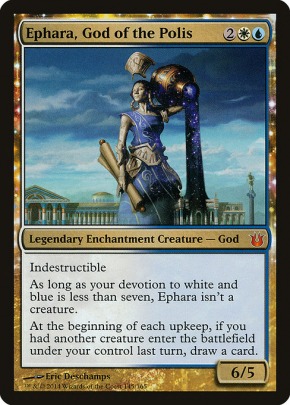


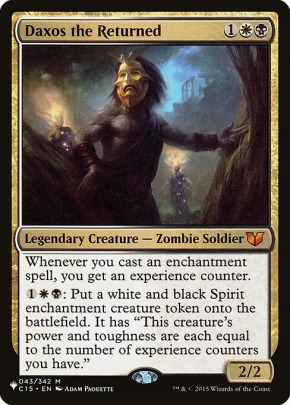



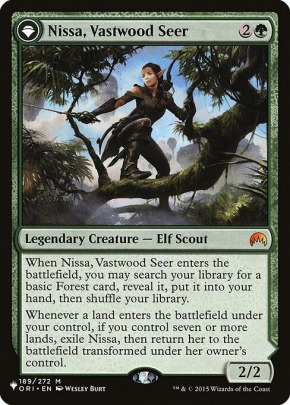
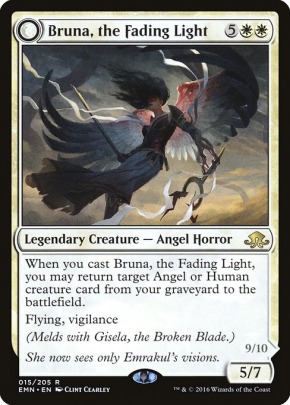
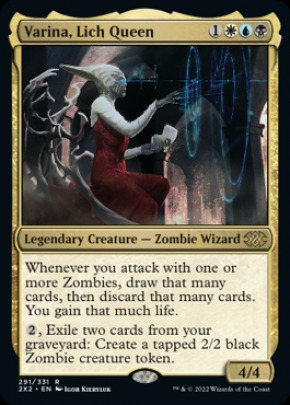
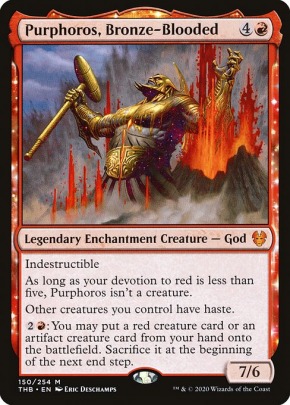
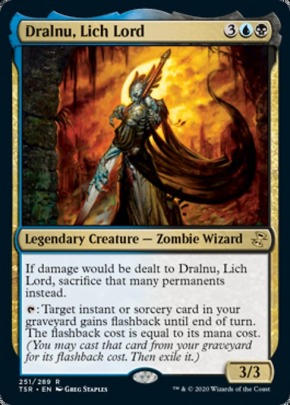


 Zacama
Zacama


